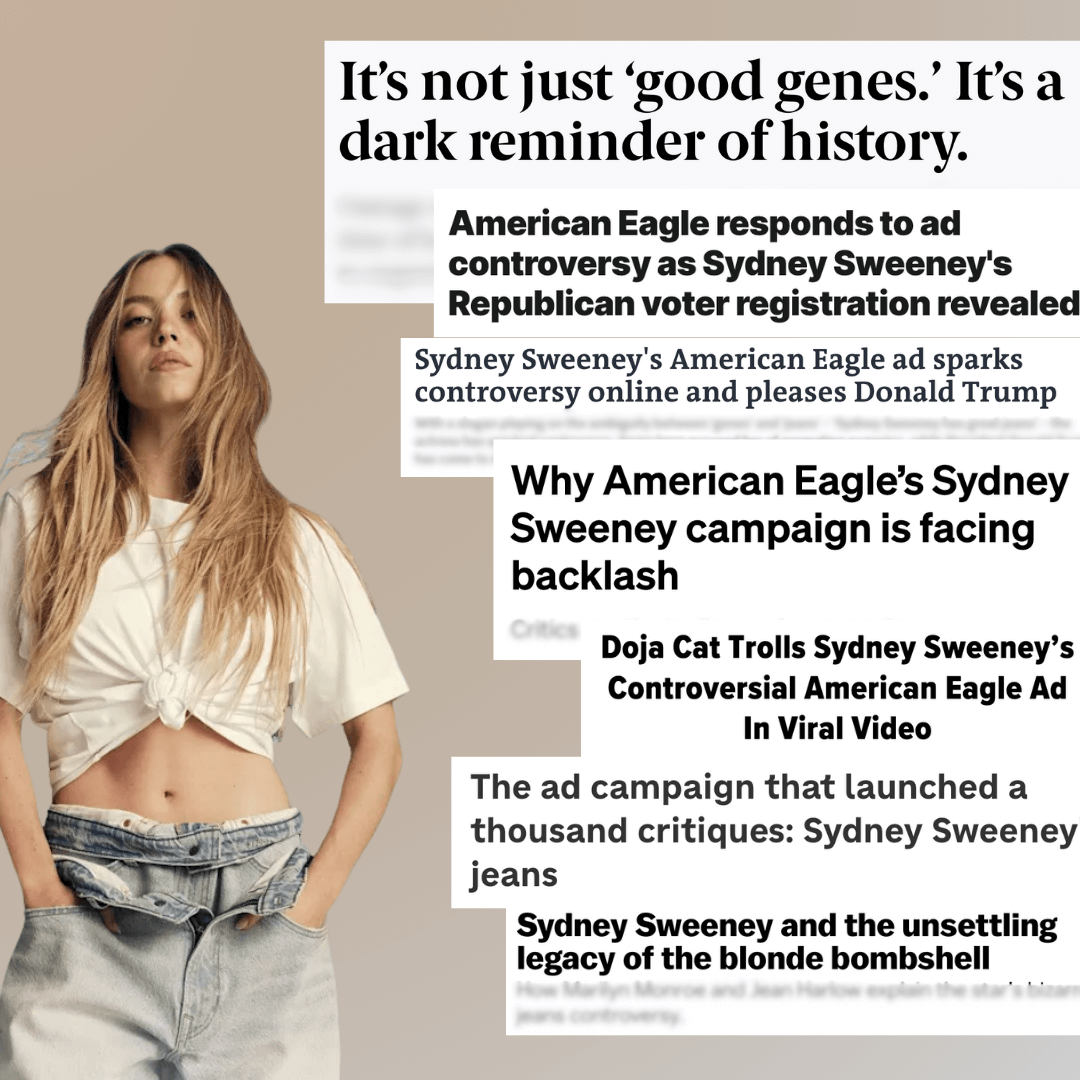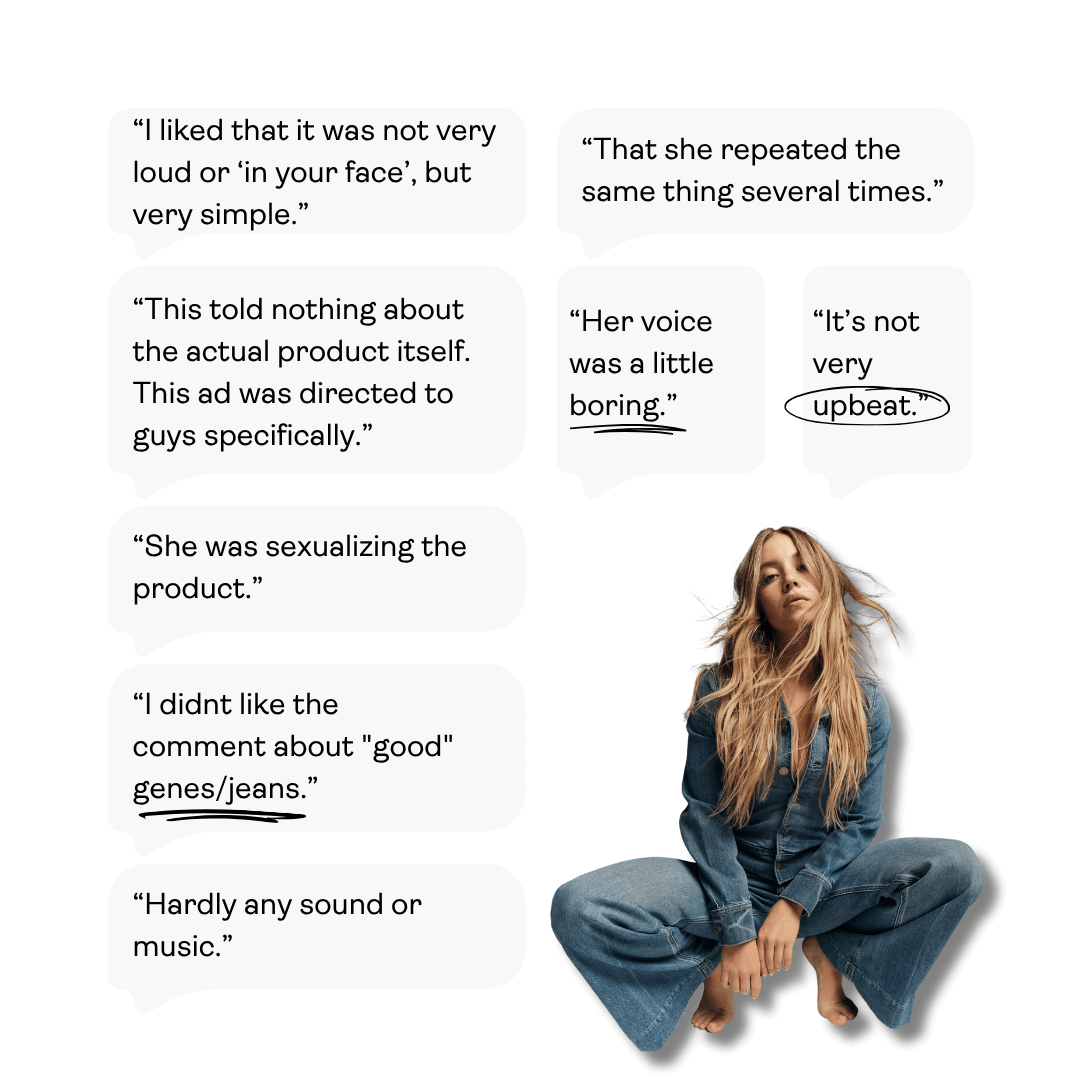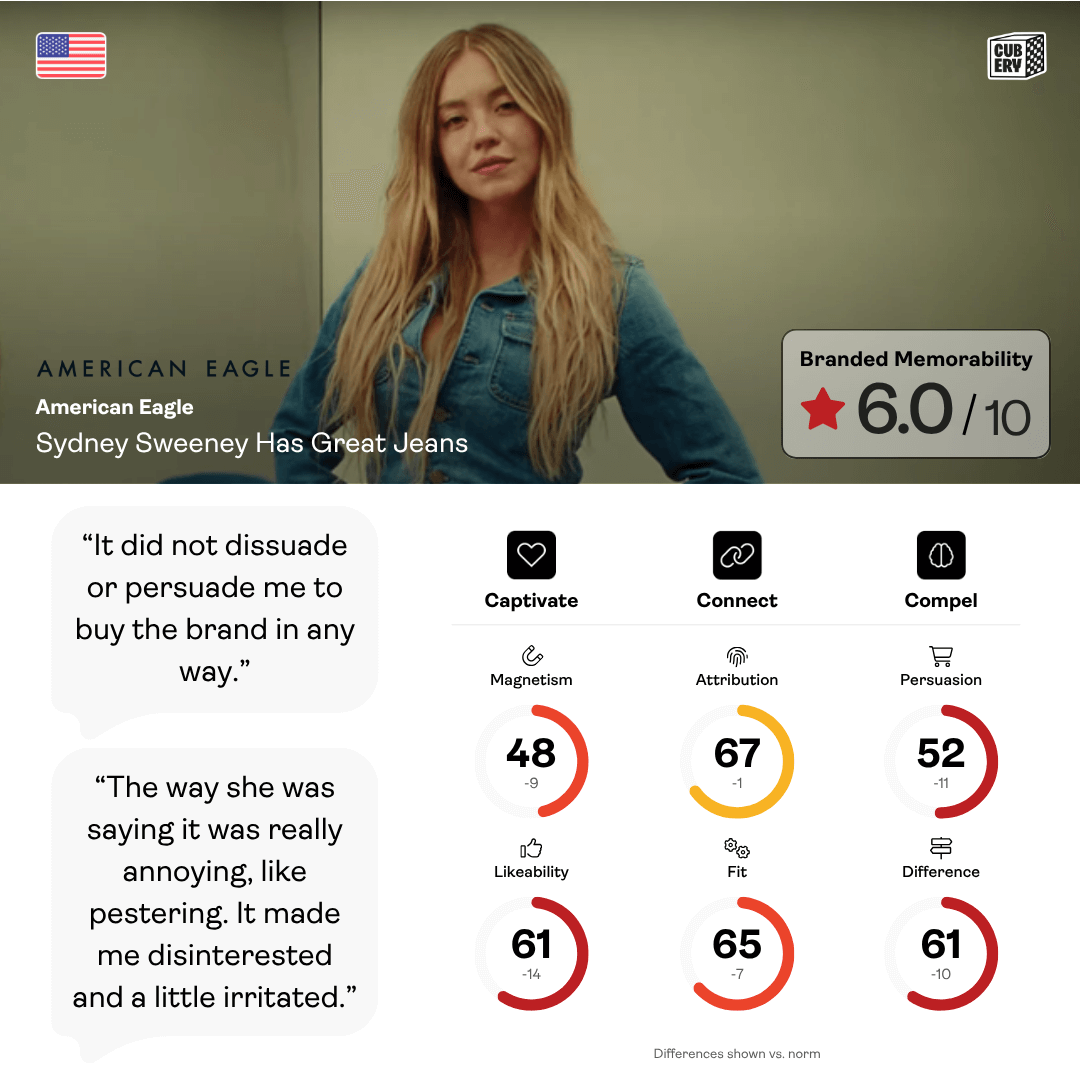
Unfortunately, Internet Explorer is an outdated browser and we do not currently support it.
To have the best browsing experience, please use Google Chrome, Firefox, Microsoft Edge or Safari.
We use cookies to improve your experience on our website. By continuing to browse this website, you agree to our use of cookies. For more information, please refer to our privacy policy.

This is a self-funded case study using our ad testing solution. Curious about the 9 essential ingredients for creating advertising that drives profitable growth? Explore our Creative Effectiveness Playbook.
Unless you’ve gone full media detox over the last few weeks, you’re likely aware that Sydney Sweeney recently appeared in an ad for U.S. apparel brand, American Eagle.
The campaign’s premise of a blond-haired, blue-eyed model having “great jeans” (or “genes”) has sparked countless articles and opinion pieces, with social media reels awash with commentators questioning what the ad is truly projecting and who must and must not be outraged.

Many pundits — from industry commentators to A-list celebrities — point to both racial undertones and gender stereotyping, aiming to deliberately stoke division within an already volatile political and social environment. On the other side of the fence, some have focused on the over-simplified core aim of advertising, therefore applauding the brand’s provocative attempt to catapult American Eagle to the forefront of every American’s minds.
But away from the echo chambers of industry, celebrity, and even political commentators, we tested the :30 spot among everyday Americans. Here’s what we found.
While negative sentiment around female sexualization and controversial eugenics connotations were (as to be expected) on people’s minds (heightening feelings of anger, disgust, and frustration), most negativity actually centered around a somewhat surprising element given all the online hysteria — a sense of boredom!
The narrative’s repetitiveness (delivered with Sweeney’s signature West Coast ease), though eliciting a sense of American pride for some, ultimately lulled people into a sense of indifference. Combined with a distinct lack of background music, the ad struggled to draw people in emotionally, and as a result failed to build tension or anticipation toward the controversial “Sydney Sweeney Has Great Jeans” punchline.
As such, when said punchline did finally arrive, it didn’t have the level of impact some were expecting. While the much-hyped provocation did work to heighten emotional anticipation toward the ad’s conclusion, it struggled to clarify the proposition, leaving many confused as to what exactly Sweeney’s monologue was attempting to tell them. And as we’ve seen consistently in our decade of testing advertising, if an ad’s message isn’t clear, emotional engagement (and therefore branded memories) become that much harder to land.

So, rather than stirring the pot and creating long lasting brand effects (for better or worse), most people’s feelings toward the brand were left unchanged. Perhaps most tellingly, people were just as likely to see American Eagle as being “for everyone” (60%) as they were to associate it with “offering quality jeans that both look and feel good” (62%) — indicating the ad’s polarizing nature didn’t play out in the way many in the marketing and media world anticipated it would.
In the end, American Eagle’s strategy undoubtedly worked to build (a lot) of earned media, leap-frogging the brand to the top of the daily news cycle. But absent of controversy, the foundations for long-term effectiveness call for more than just a fleeting stunt. Our prediction? This controversy will likely come out in the wash soon enough.

Want to test your own advertising, packaging, or product ideas? Cubery combines a team of creative effectiveness experts with cutting-edge technology, bridging the gap between creativity and commercial impact. Get in touch to learn how we can unlock growth for your brand.
